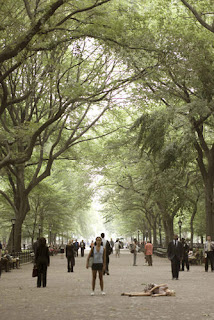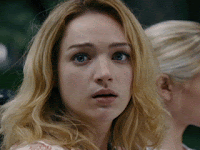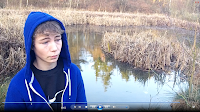A thriller is a genre of film that uses many forms of conventions to create and form
Dramatic peaks of tension throughout, by wrapping itself in mystery; using red
herrings & cliff-hangers that build up suspense, uncertainty, excitement and terror.
We were given the opportunity to create a media product with the final cut lasting a maximum of two minutes with these intentions in mind.
The codes and conventions of the thriller genre are:
· - A lot of mystery, darkness, fast pace and suspense
· - Music that builds tension, both diegetic sound but usually Non diegetic sound can build tension just as equally when used properly
· - The whole mood of the film can be changed with lighting, especially the use of shadow.
· - Use of flashbacks and mysterious footage
· - Red herrings are used to throw the viewer onto a thought which will lead to a wrong conclusion – meaning the end result may surprise them.
Our thriller focuses highly on the psychological effects of drugs and speaks on a
Broad Scale to viewers about the anxiety and stress that can come from drugs, this
Could be classed as a unconventional approach to shooting a typical thriller film. By using primarily short and snappy flash backs throughout, I believe dramatic tension and suspense are created and keep the viewers enticed throughout the film leaving them wanting more. We filmed our thriller with the intention of sticking to our script and plot and received a variety of effective shots that we shortened and integrated to create high and low points of tension where needed. Doing this allowed us to fit in a lot of points we wanted covered in our short thriller opening adding lighting and sound effects to emphasis them.
The primary conventions we used throughout the product were the use of Flash backs, Fast paced shooting/Editing of scenes, sound and use of light and darkness. These were our primary conventions as we felt they all fit with our sub genre of thriller; Psychological thriller. The use of flash backs were heavily integrated into the plot as mystery and confusion envelops the mind of the viewer as they are confused and uncertain of what is going on. Switching from the conservatory to the lake scene allows the audience to see how the flashbacks are affecting the protagonists mind; as the flashbacks continue to happen, he begins to lose more and more concentration until eventually, fully losing consciousness.
‘As the flashbacks continue to happen, he begins to lose more and more concentration until eventually, fully losing consciousness.’
Typical conventions – Shots & mis en scene
‘Phone booth’ (2002) is a typical example of a unconventional thriller. There is very little darkness or action within the film as it focuses more on the connection between the killer and the victim. This connection being the strongest link to the thriller genre as u experience the story through the killers point of view as you see the effects on the male protagonist as the story continues and unravels with the use of conventions, flashbacks and fast paced editing. I wouldn’t class this film as a thriller but it more strongly relates to our sub genre of thriller; a psychological thriller, as instead of showing you like a conventional thriller it plays with your mind and thoughts process instead.
Physiological thrillers are different

 from conventional thrillers as rather than focus on showing you the action to build up tension it often mixes up the conventions by losing one feature and focusing and enhancing another, ‘phone booth’ did this by focusing on the mind and life of the protagonist building up tension in distinct stages which is what we concentrated on with our thriller. We took these ideas along with conventions from other thrillers like ‘The happening’ where the mis en scene is conventional and begins calm however shows the viewer distinct changes in sound and behaviour to create suspense and tension; for example, ‘the happening’ begins with a shot of the sky with the clouds moving slowly and diegetic sound of wind building creating tension as a sense of unknown approaches then takes you to the normality of a ordinary day in central park. People walking around, dogs barking, children playing then it focus on two women on a bench continuing the idea of normality. A diegetic sound is then heard by one of the women quickly changing the atmosphere and mood of the scene. A scream followed by the stand still of everyone in park around this on women creates, supernatural, unexplainable and confusing emotions as the suspense of the unknown are unleashed scaring the protagonist and the viewer. We applied this conventional idea of trigger to signify change to our product as these films proved their effectiveness in creating terror and suspense, our trigger being the drug itself.
from conventional thrillers as rather than focus on showing you the action to build up tension it often mixes up the conventions by losing one feature and focusing and enhancing another, ‘phone booth’ did this by focusing on the mind and life of the protagonist building up tension in distinct stages which is what we concentrated on with our thriller. We took these ideas along with conventions from other thrillers like ‘The happening’ where the mis en scene is conventional and begins calm however shows the viewer distinct changes in sound and behaviour to create suspense and tension; for example, ‘the happening’ begins with a shot of the sky with the clouds moving slowly and diegetic sound of wind building creating tension as a sense of unknown approaches then takes you to the normality of a ordinary day in central park. People walking around, dogs barking, children playing then it focus on two women on a bench continuing the idea of normality. A diegetic sound is then heard by one of the women quickly changing the atmosphere and mood of the scene. A scream followed by the stand still of everyone in park around this on women creates, supernatural, unexplainable and confusing emotions as the suspense of the unknown are unleashed scaring the protagonist and the viewer. We applied this conventional idea of trigger to signify change to our product as these films proved their effectiveness in creating terror and suspense, our trigger being the drug itself. We selected conventions that we believed would be the most effective with some creative idea’s on how to portray them, for example, a first person shot of Ryan laying on the floor as he regains consciousness… he has no idea what has happened, where he is or where his friends are… he looks around frantically trying to regain his memory but stops to see his friends fighting, struggling as he realises one of his friends is holding a knife to the others neck. How has this happened? Why is this happening? These are things streaming through his head frantically, he can’t understand what is happening and this creates a sense of suspense and builds tension, the audience is going through these same thoughts and feeling’s as it has been shot in a first person perspective. Rapidly cutting to the highest points of tension in a scene and cutting out the slow paced and unneeded parts allows for a continuous and effective viewing experience that grabs the viewer’s attention and keeps them on edge. It also distorts reality and creates questions to be asked, whether or not they are answered is the whole point, people always want to know what happens next and so filming our thriller in this way keeps them guessing and hungry for more.
Sound:
Sound is a very important element when creating suspense, tension and emotion in the viewers mind. It can be used as a signifier to express change or to imply something is approaching and so can be very effective when creating the right atmosphere in a scene. Knowing this we decided the eeriness of the piano was ideal for the atmosphere we needed to create. Starting slowly, and calmly building up and up, by getting faster and louder as the story progresses whilst the viewer experiences the protagonist getting dragged deeper into his memories of the events that took place. Improving the effectiveness of our intended atmosphere as both the pace of shots are increased, co-ordinate to the pace of music, adding another emotional layer to our product.

Both of the shots above intend to clearly show the depressive, worried faces of the characters. The conventions used to do this in both shots is the use of close-ups. Close ups are an effective convention to present emotions as there is nothing else to look at other than that emotion.
The feelings felt in our Thriller are very similar to the feelings you would feel from many other famous Thrillers such as Memento and The Happening this shows we were effective at matching the Thriller genre with our conventions. These thrillers also have psychological hints to them as with my product, memento also shares different time scales which has a huge impact on the viewer. The main feelings felt in both my product, Memento and The Happening are confusion, tension, depression and darkness.



No comments:
Post a Comment